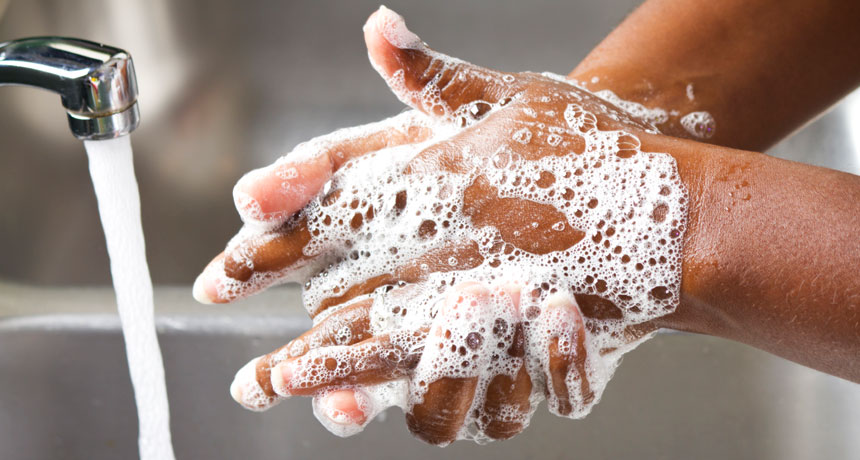Triclosan aids nasal invasions by staph
The antimicrobial compound found in soaps and toothpaste may help infectious bacteria stick around

ANTIBACTERIAL BACKFIRE Soaps that contain triclosan, a commonly used antimicrobial compound, could actually help disease-causing bacteria colonize the human nose.
©iStock.com/EMPPhotography
Sneezing out antimicrobial snot may sound like a superpower, but it actually could be a handicap.
Triclosan, an omnipresent antimicrobial compound found in products ranging from soaps and toothpaste to medical equipment, is already known to show up in people’s urine, serum and breast milk. It seeps in through ingestion or skin exposure. Now, researchers have found that it gets into snot, too. And in the schnoz, triclosan seems to help the disease-causing bacteria Staphylococcus aureus instead of killing the microbes.
Microbiologist Blaise Boles, of the University of Michigan in Ann Arbor, and colleagues swabbed the noses of 90 adults and found that having triclosan-containing snot could double a person’s likelihood of carrying staph. The microbes may have adapted to triclosan, allowing them to remain steadfast in the nose. The results appeared April 8 in mBio.
Because triclosan usually kills bacteria, the finding was a surprise, says Boles, who works to understand why only some people harbor staph. A person carrying the microbe in his or her nose, he says, has a much higher risk of a staph infection, which can occur in the skin and blood and cause pneumonia and produce toxic shock syndrome.
In the study, 37 people, or 41 percent, had detectable levels of triclosan in their nasal secretions. Of the people that had very little or no antimicrobial compound in their snot, 27 to 32 percent had staph in their nostrils. This fraction fits with previous studies, which have found that staph colonizes about 30 percent of the general population. But of the people with higher levels of triclosan, 64 percent carried staph.
The researchers found a similar link in rat experiments. They used a breed of rat known to take about a week to shake off a mild nasal invasion by staph. When the researchers gave the rats triclosan-laced food and stuck a small batch of staph in the rodents’ noses, the rats could not get rid of the microbes.
In the lab, the researchers found that staph grown with nonlethal doses of triclosan were more “sticky,” attaching better to human proteins, as well as to glass and plastic surfaces. Nonlethal doses of triclosan in snot could help staph hunker down in the nose, giving it an advantage over other nose-dwelling microbes, Boles says.
Microbiologist Hanne Ingmer of the University of Copenhagen says the finding has troubling implications for public health. Triclosan, she adds, could provide footholds for the most worrisome forms of staph, such as methicillin-resistant Staphylococcus aureus or MRSA.
While health experts have focused on the misuse of antibiotics, which can spur microbes to become drug resistant, the uses of triclosan and similar compounds in personal care products “are almost an uncontrolled area,” she says.
And unlike with antibiotics, Boles adds, using triclosan to kill off microbes may not even work well. “There’s no indication that it’s doing a better job than soap and water,” he says.
The Food and Drug Administration has asked companies to provide evidence that adding triclosan to soaps is safe and effective.







